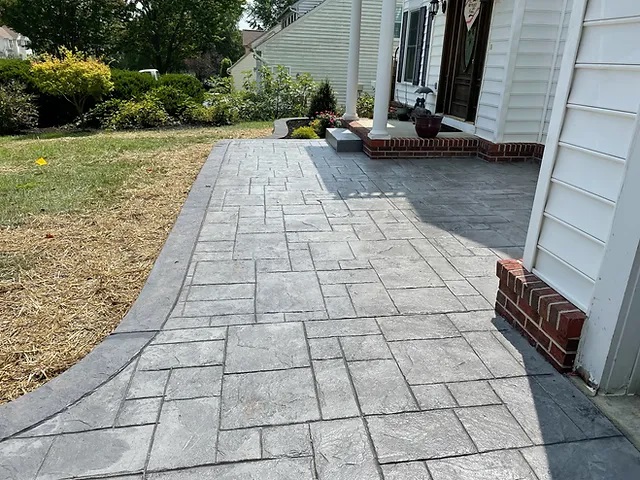Explaining On-Demand Service Apps: Types and Features

On-demand service apps have changed how people access products and services. Whether it’s ordering food, booking a ride, or scheduling home repairs, these apps connect users and providers through real-time digital platforms. With the continued rise of mobile usage and user expectations, businesses across industries now build on-demand models to meet market demands.
What Are On-Demand Service Apps?
On-demand apps act as intermediaries between customers and service providers. Users make requests through the app, and the platform connects them to professionals or companies who fulfill those needs. These apps work across multiple verticals—such as transportation, food delivery, and on demand home service—and use real-time data to match supply and demand efficiently.
The convenience and flexibility of these platforms appeal to both customers and service providers. Users get quick access to services like plumbing, cleaning, appliance repair, and other home-related tasks, while providers gain access to a wider customer base and more flexible work opportunities.
Types of On-Demand Service Apps
On-demand services fall into several key categories, each targeting specific industries and user needs.
1. Ride-Hailing and Transportation
Apps like Uber, Lyft, and Bolt lead the way in this category. These platforms allow users to book rides instantly, track driver location, and make digital payments. Some apps also offer additional services such as carpooling, bike rentals, and long-distance travel.
2. Food and Grocery Delivery
Food delivery platforms such as DoorDash, Uber Eats, and Grubhub let users order meals from local restaurants. Similarly, grocery delivery apps like Instacart and BigBasket allow users to shop for daily essentials without stepping out. These services often rely on third-party drivers and real-time tracking.
3. Home Services
These platforms connect users with professionals who handle home repairs, cleaning, electrical work, plumbing, and more. Popular examples include TaskRabbit, Handy, and Urban Company. Users browse services, schedule visits, and pay through the app.
4. Healthcare Services
Telemedicine and at-home health services fall under this category. Apps like Teladoc and Practo connect patients with doctors through video calls, chat, and appointment scheduling. Some apps also allow users to book lab tests or order medicines for home delivery.
5. Beauty and Wellness
Platforms in this segment let users book personal care services such as haircuts, massages, and spa treatments. These services may be offered at home or in salons. Apps like Glamsquad and StyleSeat serve this market.
6. Logistics and Courier Services
On-demand courier apps like Postmates and Dunzo help users send or receive packages quickly. Businesses also use these platforms to handle same-day deliveries or intercity shipments. The apps track parcels and update delivery status in real time.
7. Freelance and Professional Services
These platforms match freelancers with clients for services like graphic design, content writing, programming, or consulting. Fiverr and Upwork are key players in this space. Users post project details, review proposals, and manage contracts directly within the app.
Key Features of On-Demand Service Apps
For an top on-demand app to succeed, it must offer features that provide ease of use, speed, and reliability. Both customer-facing and provider-facing interfaces must work smoothly to ensure satisfaction on both ends.
1. User Registration and Profiles
Users and service providers must register and set up their profiles. This may involve phone number verification, email sign-up, or social login. Profiles contain personal details, order history, ratings, and preferences.
2. Service Listings and Categories
The app should clearly present available services. Users must navigate categories easily and select the service they need. Each listing may include descriptions, pricing, and estimated delivery times.
3. Real-Time Tracking
Live tracking allows users to monitor service progress, whether it’s a food order or a ride. GPS integration provides map views and estimated time of arrival.
4. In-App Payments
Secure payment gateways allow users to pay through credit cards, digital wallets, UPI, or other methods. Some apps also support cash on delivery or split payments. Payment history should remain visible in the user’s dashboard.
5. Ratings and Reviews
After a service is complete, users should leave ratings and feedback. This helps maintain service quality and gives new users insight into provider performance.
6. Notifications and Alerts
Push notifications keep users updated about order confirmations, provider arrival, delivery status, and promotions. They also remind users about incomplete orders or service availability.
7. Schedule Booking
Many services work better with scheduled appointments. Users must choose dates and time slots for upcoming services, and providers should receive timely alerts to prepare.
8. Chat or Call Options
Direct communication between users and service providers improves coordination. In-app chat or call features let users clarify requests or handle unexpected issues.
9. Admin Panel
Every on-demand app needs an admin dashboard to manage users, track performance, resolve disputes, and manage payments. It helps ensure that the app remains functional and trustworthy for all users.
10. Loyalty Programs and Offers
Discounts, loyalty points, and referral bonuses drive repeat usage. These incentives encourage users to return to the platform and refer others.
Benefits for Businesses and Users
The rise of on-demand apps benefits both service providers and end-users.
For Users:
- Get quick access to services without visiting physical locations.
- Compare pricing, reviews, and availability in one place.
- Enjoy 24/7 service access in many cases.
For Providers:
- Reach more customers with minimal marketing effort.
- Set flexible schedules and work on their own terms.
- Receive payments directly through the app with proper records.
Popular Tech Stacks for On-Demand Apps
Developers use several tools and frameworks to build reliable on-demand apps.
- Frontend: React Native, Flutter, Swift, Kotlin
- Backend: Node.js, Django, Laravel
- Database: MongoDB, PostgreSQL, MySQL
- Payments: Stripe, PayPal, Razorpay
- Maps & Location: Google Maps API, Mapbox
- Notifications: Firebase Cloud Messaging, OneSignal
Choosing the right stack depends on budget, app size, expected traffic, and platform compatibility.
Key Challenges in Building On-Demand Apps
While these platforms offer strong benefits, they also come with technical and operational challenges:
- Managing real-time demand and supply without delays
- Ensuring safety, especially in transport and home services
- Handling disputes and refunds effectively
- Keeping the app stable under high traffic
- Building trust between users and service providers
Solving these problems requires a combination of strong backend infrastructure, user-centric design, and responsive support systems.
Conclusion
On-demand service apps have reshaped customer behavior and opened new paths for businesses. Whether you’re a startup looking to launch your first app or an established company planning to enter the on-demand space, the right mix of functionality and user experience will determine your success. By focusing on reliability, ease of use, and quality service delivery, these apps can meet user expectations and sustain growth in a competitive market.

